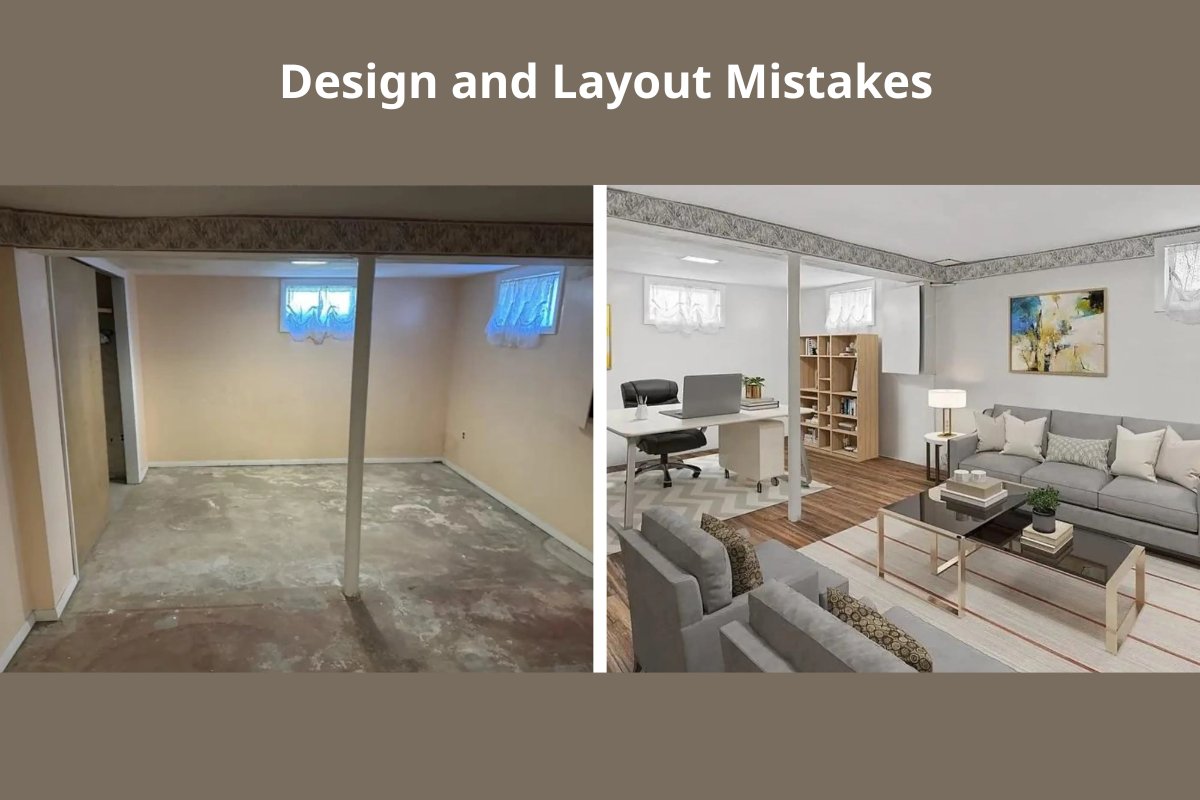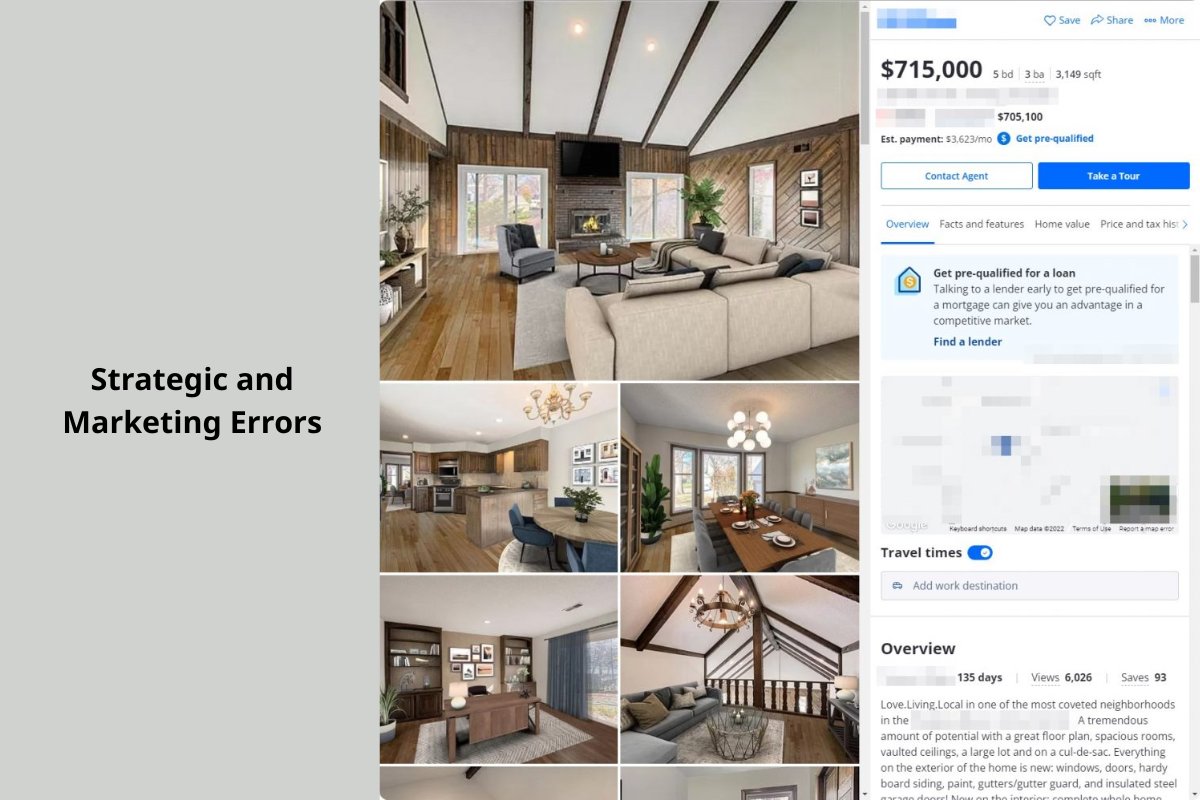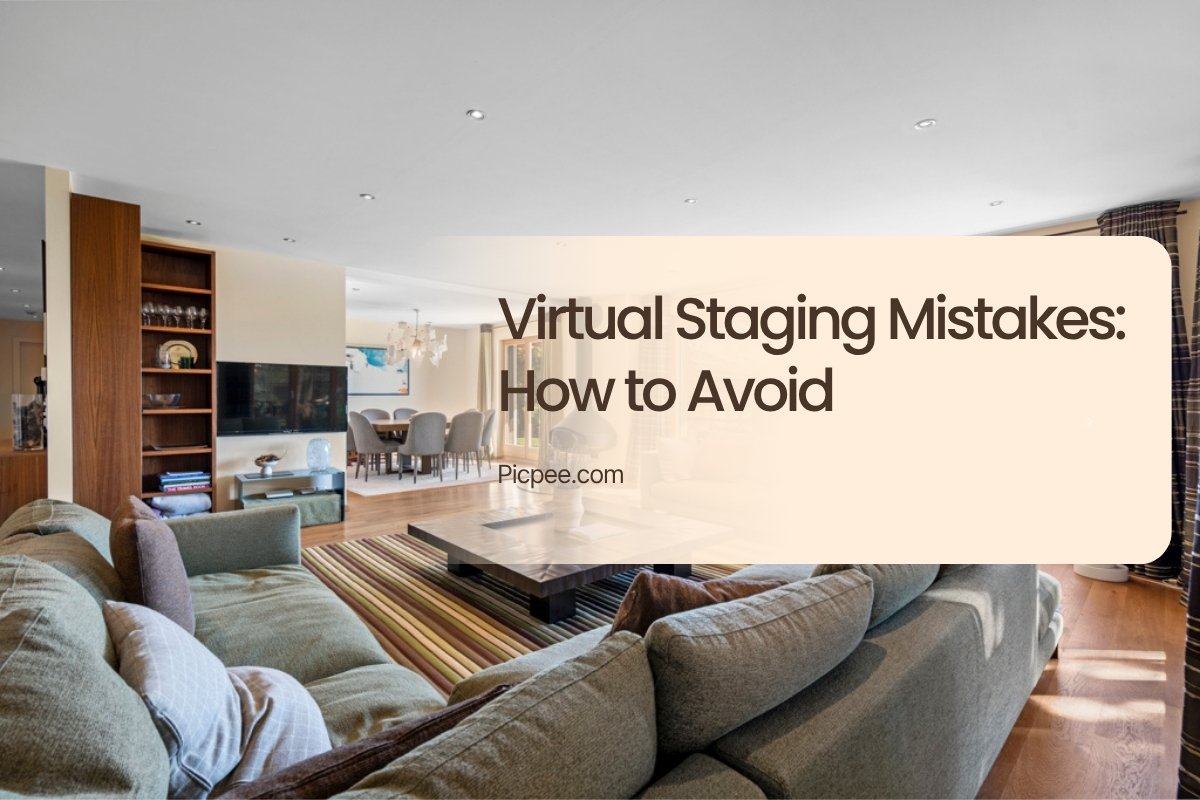Virtual staging is a powerful tool to showcase properties, but missteps can reduce appeal, mislead buyers, or even damage credibility. Understanding common pitfalls ensures your staged images are both realistic and high-converting.
Design and Layout Mistakes

- Overcrowding the space: Too much furniture or decor can make rooms feel cramped, reducing buyer appeal.
- Incorrect scaling: Using oversized or undersized furniture distorts the perception of space.
- Poor furniture placement: Blocking walkways or creating unrealistic layouts confuses potential buyers.
- Ignoring room functionality: Each space should reflect practical uses; for example, a living room may double as a workspace.
- Inconsistent design: Mismatched colors, styles, or decor throughout the home can make it feel disjointed or unfocused.
Technical and Quality Issues

- Low image quality: Starting with blurry or low-resolution photos undermines the final staged image.
- Inaccurate lighting and shadows: Realistic lighting is essential; ignoring how light interacts with furniture makes scenes appear fake.
- Over-editing or misleading visuals: Excessive edits, unrealistic furniture, or undisclosed virtual staging erode buyer trust.
- Incorrect angles in virtual tours: Misleading perspectives can give buyers a false sense of room size and flow.
Strategic and Marketing Errors

- Ignoring the target audience: Staging should appeal to the property’s likely buyers, whether it’s modern young professionals or families.
- Overlooking key features: Always highlight the property’s strengths, like fireplaces, large windows, or open-concept kitchens.
- Neglecting empty space: Showing the property unfurnished in addition to staged images helps buyers accurately visualize the size and layout.
Not considering lifestyle context: Avoid generic staging; add subtle touches that reflect how the home could be lived in, such as cozy reading nooks or practical storage solutions.
Extra Tips for Effective Virtual Staging

- Use realistic textures and color palettes to maintain authenticity.
- Keep decor minimal yet inviting to allow buyers to imagine their own belongings in the space.
- Ensure all elements are proportional and consistent with the home’s style.
- Combine virtual staging with professional photography techniques, such as HDR and proper angles, for maximum impact.
By avoiding these common mistakes and focusing on quality, proportion, and buyer appeal, virtual staging can transform empty properties into irresistible homes that sell faster and attract more interest.
How Picpee Can Help You Avoid Virtual Staging Mistakes
Virtual staging is powerful—but precision and realism require expertise. That’s why many real estate professionals turn to Picpee, a trusted name in real estate photo enhancement.
Why Use Picpee for Virtual Staging
- Realistic, high-quality virtual furniture integration
- Professional lighting and color consistency
- Perspective correction and spatial accuracy
- Custom designs matched to property style and audience
- Fast turnaround for bulk listings
With Picpee, your listings retain authenticity, accuracy, and aesthetic appeal—without the typical pitfalls of poorly executed virtual staging.
Conclusion
Virtual staging is one of the most cost-effective and visually powerful tools in modern real estate marketing. Yet, its success depends entirely on execution. Avoiding the common virtual staging mistakes outlined above will help you maintain trust, attract more buyers, and boost listing performance.
Whether you’re a seasoned realtor or just exploring virtual staging, remember: authentic presentation sells. With careful attention to scale, lighting, and realism, you can create listings that inspire confidence and drive conversions.
 Single Exposure
Single Exposure Room Cleaning
Room Cleaning Reels
Reels Blended Brackets (HDR)
Blended Brackets (HDR) Changing Seasons
Changing Seasons Slideshows
Slideshows Flambient
Flambient Water in Pool
Water in Pool Individual
Individual 360° Image Enhancement
360° Image Enhancement Lawn Replacement
Lawn Replacement Team
Team Virtual Staging
Virtual Staging Rain to Shine
Rain to Shine Add Person
Add Person Remodel
Remodel Custom 2D
Custom 2D Remove Person
Remove Person 360° Image
360° Image Custom 3D
Custom 3D Background Replacement
Background Replacement Day to Dusk
Day to Dusk Property Video
Property Video Cut Outs
Cut Outs Day to Twilight
Day to Twilight Walkthrough Video
Walkthrough Video Change color
Change color 1–4 Items
1–4 Items




